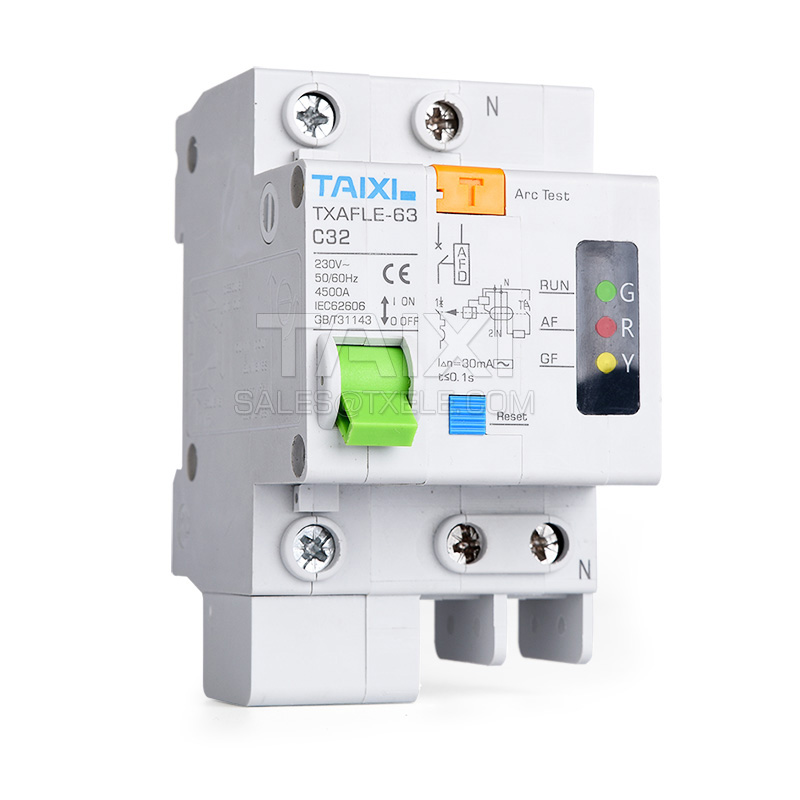Arc fault circuit breaker uses electronic technology to identify arc state. Fault arc detection is the key link of arc fault protection. Research on arc and fault arc detection began in the late 1980s and early 1990s in the United States. Major arc detection and fault identification methods are based on the optical, thermal, acoustic and electromagnetic characteristics of arc discharge.
(1) According to the characteristics of arc waveform, arc fault can be identified by judging whether the current waveform derivative and the accumulated arc cycle exceed the set threshold.
(2) According to the abrupt change of arc high frequency energy: arc fault circuit breaker recognizes arc by detecting the abrupt change of energy in high frequency part of current signal, and identifies arc fault by detecting arc number.
(3) Using high-frequency wavelet transform: high-frequency sampling of load current, calculating non-zero-crossing discrete wavelet coefficients, together with low-frequency current zero-crossing signal to determine whether the threshold is met.
(4) Fourier transform: Short-time Fourier transform is used to analyze the changes of fundamental, odd and even harmonic components of sampled signals, and to extract and judge the characteristics of series arc fault.
(5) Time-frequency analysis: Arc fault circuit breaker is based on the difference of delay attenuation time between high and low pulses reflecting current abrupt change, and the time domain above and below the threshold is used as the judgment basis.
(6) Using high frequency signal contrast: by judging whether the high frequency current generated periodically is different from the normal switching arc, and detecting whether the spectrum range is different from the ordinary high frequency harmonics generated by power electronic devices and other applications.



